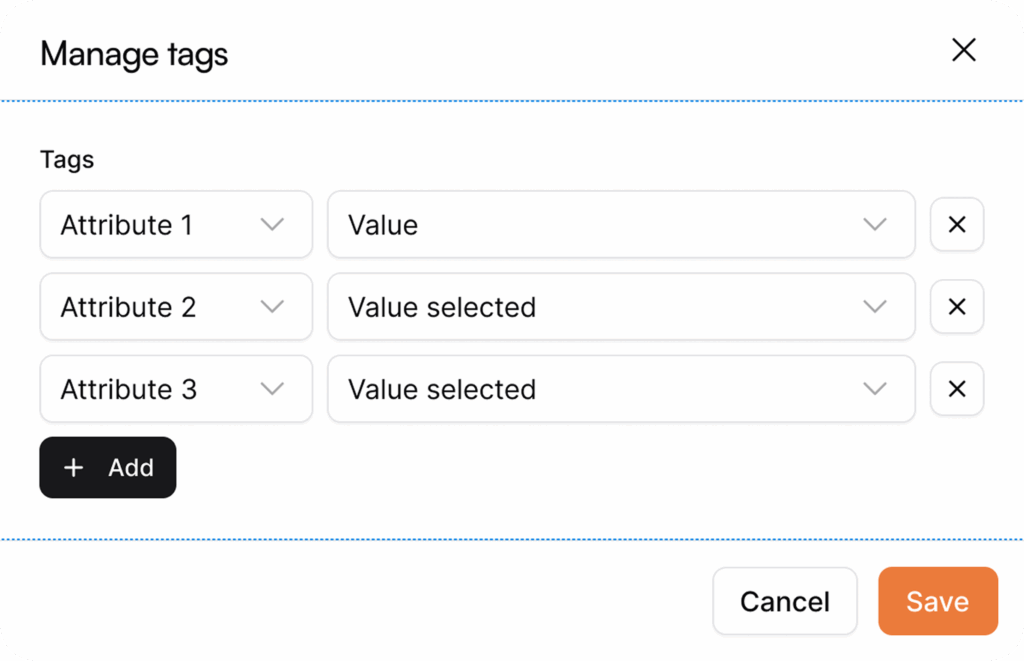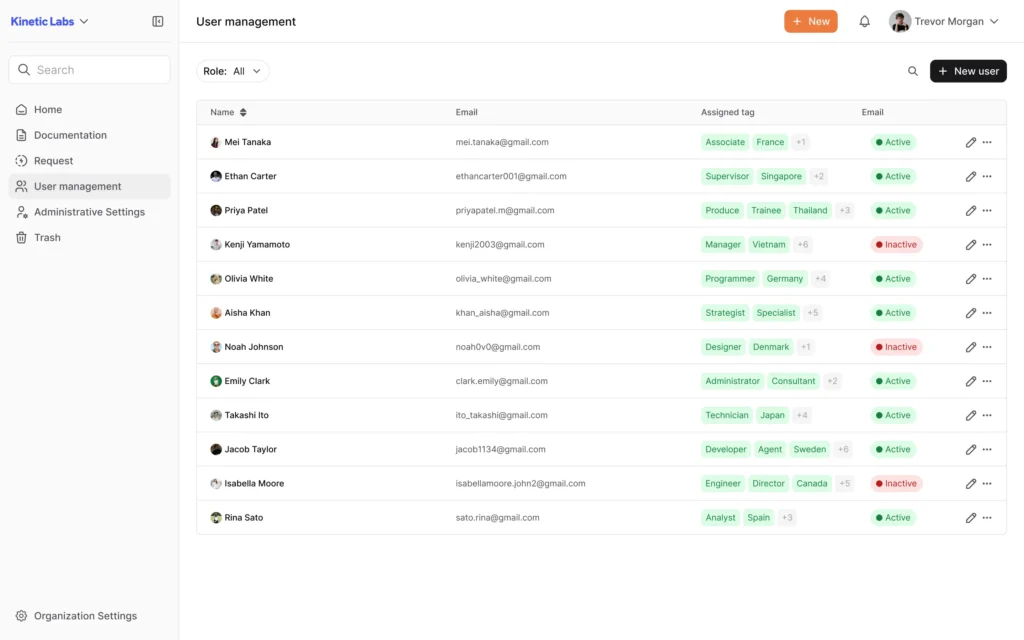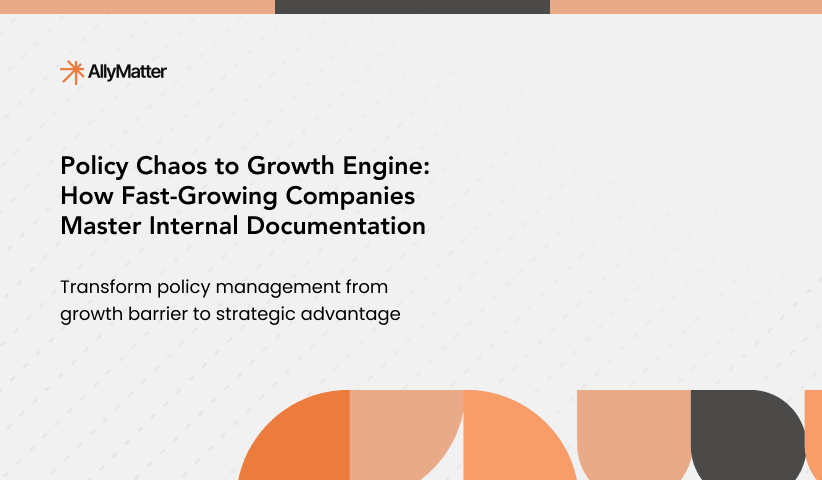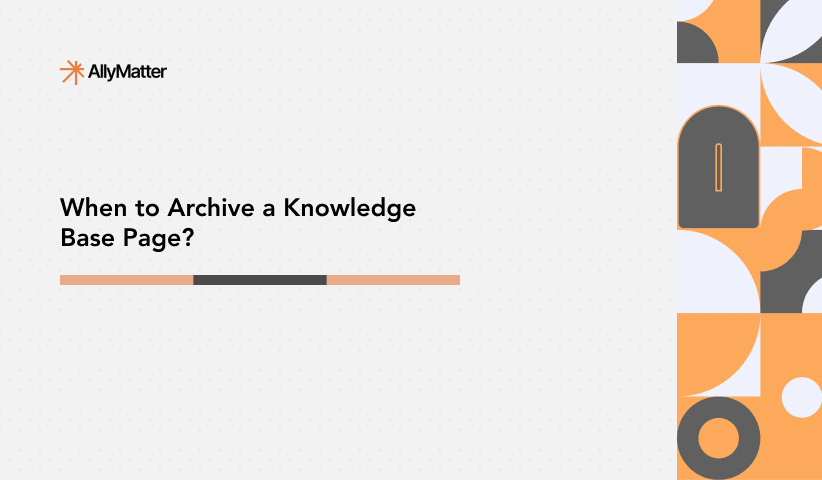Your finance team just spent three hours searching for the updated expense policy. The new sales hire can’t find the latest pricing guidelines. Your support team is giving inconsistent answers because product documentation is scattered. These aren’t just productivity issues; they’re costly knowledge gaps that the right knowledge management solution can eliminate.
What exactly are knowledge gaps? Simply put, they’re the missing links in your company’s collective understanding – the critical information, processes, and expertise that should be accessible but aren’t. In fast-growing organizations, these gaps widen as you scale, ultimately becoming costly barriers to your continued success. Without a proper knowledge base strategy, these gaps widen as you scale, ultimately becoming costly barriers to your continued success
Let’s explore how these knowledge gaps are silently draining your resources, and more importantly, how implementing a knowledge base solution like AllyMatter can transform these challenges into opportunities for growth.
Understanding the real impact of knowledge gaps
Knowledge gaps don’t just appear; they develop gradually as your company grows. They form through departmental silos, ineffective knowledge transfer, insufficient documentation of processes, and perhaps most significantly, through employee turnover.
When a key team member leaves, they take with them years of accumulated knowledge about your products, customers, and operations. Without proper documentation, this creates an immediate knowledge vacuum that impacts everyone who relied on that expertise.
The effects ripple throughout your organization:
- Projects stall while team members search for answers.
- Customers receive inconsistent information.
- New hires take longer to become productive.
- The same problems get solved repeatedly by different teams.
- Decisions get delayed or made without complete information.
The mounting costs of organizational knowledge gaps
The financial impact of knowledge gaps extends far beyond just wasted time. When we calculate the true cost, we need to consider both direct expenses and opportunity costs.
Take onboarding, for example. Without standardized documentation, each new hire’s training becomes inconsistent and inefficient. According to the Society for Human Resource Management (SHRM), the average cost of onboarding a new employee is around $4,700, but this can balloon significantly when knowledge transfer is poor.
Or consider customer support. When your support team lacks access to comprehensive product knowledge, resolution times increase, customer satisfaction decreases, and repeat contacts drive up costs.
These costs compound as your company grows. What might seem manageable with 50 employees becomes a critical issue at 100 employees and potentially catastrophic at 250.
The good news? These challenges can be addressed with the right knowledge management solution. Let’s look at how AllyMatter specifically helps growing companies reduce these costs.
10 ways AllyMatter eliminates costly knowledge gaps
1. Reducing time wasted searching for information
The problem: Your team members spend hours each week hunting through emails, chat logs, shared drives, and spreadsheets for essential information.
The solution: AllyMatter centralizes all documentation in one searchable knowledge base system. With powerful metadata search and smart tagging, team members find what they need in seconds, not hours. The platform’s intelligent organization features make it easy to categorize and retrieve information using custom categories that work for your specific business needs.

The savings: Team members redirect time from searching to productive work, eliminating frustration and maintaining momentum on important projects rather than getting derailed by missing information.
The savings: Imagine reclaiming just 30 minutes per day per employee. For a 100-person company, that’s 12,500 hours annually redirected to productive work, equivalent to adding 6 full-time employees without increasing headcount.
2. Preventing costly knowledge loss during employee transitions
The problem: When key team members leave, critical knowledge walks out the door with them, creating expensive gaps in operational continuity.
The solution: AllyMatter ensures expertise is documented and preserved, regardless of personnel changes. The platform makes it easy to capture institutional knowledge through structured documentation, collaborative editing, and version tracking, while the audit trail ensures nothing gets lost during handovers.
The savings: Projects continue without costly delays when team members depart, new employees get up to speed quickly, and the organization maintains continuity in critical processes and customer relationships.
3. Streamlining onboarding and training processes
The problem: Without standardized training materials, onboarding new team members is inconsistent, time-consuming, and often ineffective.
The solution: AllyMatter provides structured access to all standard operating procedures, training materials, and company policies in one place. HR teams can create custom onboarding pathways with sequenced documentation, track completion of required reading, and ensure consistent high-quality orientation.
A structured knowledge base provides organized access to all standard operating procedures, training materials, and company policies in one place, with features like custom onboarding pathways and completion tracking.
The savings: New hires become productive more quickly, managers spend less time repeatedly answering the same questions, and consistent onboarding leads to fewer early mistakes and better retention.
Learn more about specific HR knowledge base implementation strategies.
4. Eliminating redundant work and “reinventing the wheel”
The problem: Different departments or teams tackle the same challenges repeatedly because they’re unaware of existing solutions.
The solution: AllyMatter makes previous work discoverable, preventing wasted effort on problems that have already been solved. Cross-functional visibility (with appropriate access controls) ensures teams can build upon each other’s work rather than starting from scratch.

The savings: Teams avoid duplicating efforts, preventing the frustration of later discovering someone else had already solved the same problem and allowing resources to be directed toward genuinely new challenges.
5. Improving decision-making through accessible expertise
The problem: Without access to historical data and previous decisions, teams make uninformed choices that often lead to costly mistakes.
The solution: AllyMatter preserves the context and reasoning behind previous decisions, recording not just what was decided, but why. Features like version history, commenting, and discussion threads preserve important context that would otherwise be lost in email chains or meeting notes.
The savings: Decision-makers avoid repeating past mistakes and leverage the organization’s collective experience, leading to faster, more informed decisions that improve outcomes across the business.
6. Enhancing compliance and reducing regulatory risks
The problem: Inconsistent understanding of compliance requirements leads to costly mistakes, potential fines, and legal exposure.
The solution: AllyMatter ensures everyone works from current approved policies with audit trails that demonstrate compliance efforts. The platform tracks who has viewed critical documents, manages approval workflows, and maintains a complete history of policy changes with electronic signature capabilities.
Modern knowledge management platforms ensure everyone works from current approved policies with audit trails that demonstrate compliance efforts, including built-in signature capabilities and automated approval workflows.

The savings: Your organization reduces the risk of non-compliance penalties and associated legal costs while simplifying audit preparation and ensuring team members always access the most current policies.
7. Accelerating customer support resolution times
The problem: Support teams waste valuable time searching for answers or providing inconsistent solutions to common customer issues.
The solution: AllyMatter gives support teams instant access to product documentation and troubleshooting guides with powerful search functionality. As new issues are resolved, solutions can be immediately documented and made available to the entire team, ensuring consistent responses.
The savings: Customer issues get resolved more quickly and consistently, leading to higher satisfaction while improving first-contact resolution rates and reducing costly escalations.
8. Breaking down departmental knowledge silos
The problem: Critical information gets trapped in departmental silos, preventing cross-functional collaboration and creating inefficiencies.
The solution: AllyMatter creates a single source of truth accessible across departments with appropriate permission controls. Cross-functional projects can have dedicated spaces where relevant documentation from multiple departments is aggregated while keeping sensitive information protected.
The savings: Projects move forward more smoothly as team members access information from other departments without delays, accelerating organizational learning and improving overall coordination.
Discover why standalone knowledge bases outperform scattered documentation.
9. Standardizing processes across the organization
The problem: Inconsistent processes lead to quality issues, unpredictable outcomes, and efficiency losses.
The solution: AllyMatter makes it easy to document, distribute, and update standard operating procedures with clear visuals. Version control makes it clear which procedures are current, while notifications alert team members when critical processes are updated.
The savings: Quality and consistency improve as everyone follows standardized best practices, training becomes more straightforward, and process improvements can be quickly implemented organization-wide.
Explore how SOP documentation drives scalable growth.
10. Preserving institutional knowledge for long-term value
The problem: Years of accumulated wisdom and experience remain undocumented, creating vulnerability to knowledge loss and limiting your ability to scale.
The solution: AllyMatter’s intuitive tools make it easy to capture institutional knowledge in multiple formats. The system encourages ongoing contributions by making documentation simple and integrated into normal workflows rather than a separate burden.
The savings: Your organization builds a valuable knowledge asset that appreciates over time, making you more resilient to personnel changes and providing a competitive advantage that competitors without structured knowledge management cannot easily replicate.
Putting knowledge to work: Implementing AllyMatter in your growing company
Implementing a knowledge base solution might seem overwhelming when you’re already stretched thin. The good news? AllyMatter is designed specifically for growing companies that need results quickly without adding complexity.
Most organizations begin seeing measurable results within the first month of implementation. The process typically includes:
- Initial setup and customization to match your organizational structure
- Migration of existing documentation from scattered sources
- Permission setup to ensure appropriate access control
- Team training on contributing to and using the knowledge base
- Establishing processes for keeping content current and relevant
Unlike enterprise systems that require months of implementation and dedicated administrators, AllyMatter’s intuitive design means your team can begin using it productively almost immediately.
From knowledge gaps to growth engine: The AllyMatter advantage
The question isn’t whether knowledge gaps are costing you money; it’s how much you’re willing to lose before implementing a solution designed to transform scattered information into organized, accessible knowledge that drives measurable productivity gains.
By implementing AllyMatter as your knowledge base solution, you transform these challenges into competitive advantages. Your team members spend less time searching and more time producing. New hires become productive faster. Critical knowledge stays with your organization regardless of personnel changes. And perhaps most importantly, you create a foundation that supports sustainable growth.
Ready to transform your organization’s knowledge management? Join our waitlist to be among the first to experience how AllyMatter turns scattered information into strategic advantage for growing companies.
Frequently asked questions
What makes a knowledge base different from shared drives or wikis?
A knowledge base goes beyond simple file storage. It includes intelligent search capabilities, access controls, approval workflows, and version tracking specifically designed for organizational knowledge management. Unlike shared drives where information gets buried, knowledge bases make content discoverable and maintainable.
How quickly can teams see results from knowledge base implementation?
Most organizations notice improvements within the first month. Teams spend less time searching for information, new hires find resources more easily, and recurring questions decrease significantly. The key is starting with your most frequently needed documentation.
What content should we prioritize when building our knowledge base?
Focus on information that multiple people request regularly: standard operating procedures, onboarding materials, policy documents, and troubleshooting guides. Document processes currently dependent on specific individuals to prevent knowledge loss during transitions.
How do we keep our knowledge base current and prevent it from becoming outdated?
Assign content ownership to specific team members, establish regular review cycles, and choose platforms that notify you when content needs updating. Make contributing to the knowledge base part of regular workflows rather than a separate task.
Is a knowledge base worth implementing for smaller growing companies?
Growing companies benefit most from knowledge bases because they’re scaling rapidly and can’t afford knowledge gaps. Early implementation prevents costly inefficiencies and creates a foundation that supports sustainable growth without requiring additional headcount.


